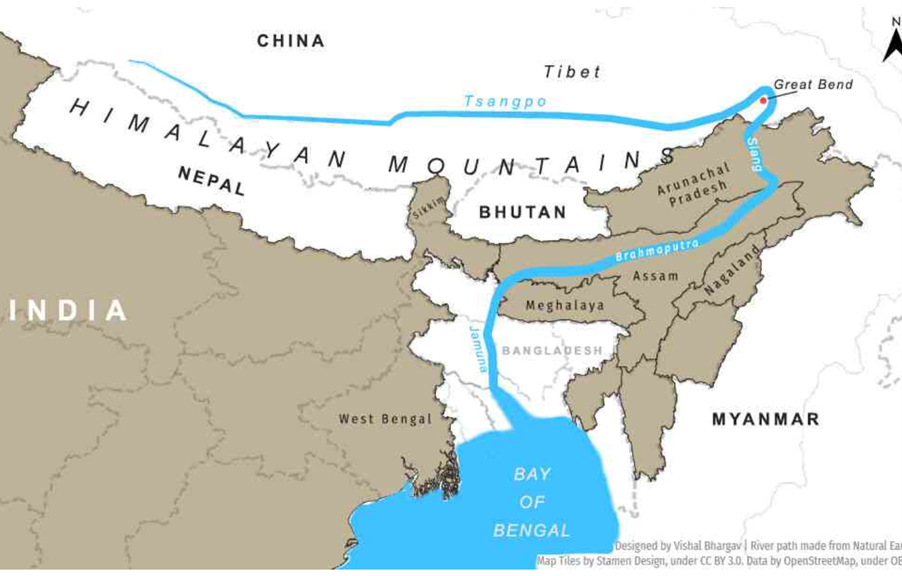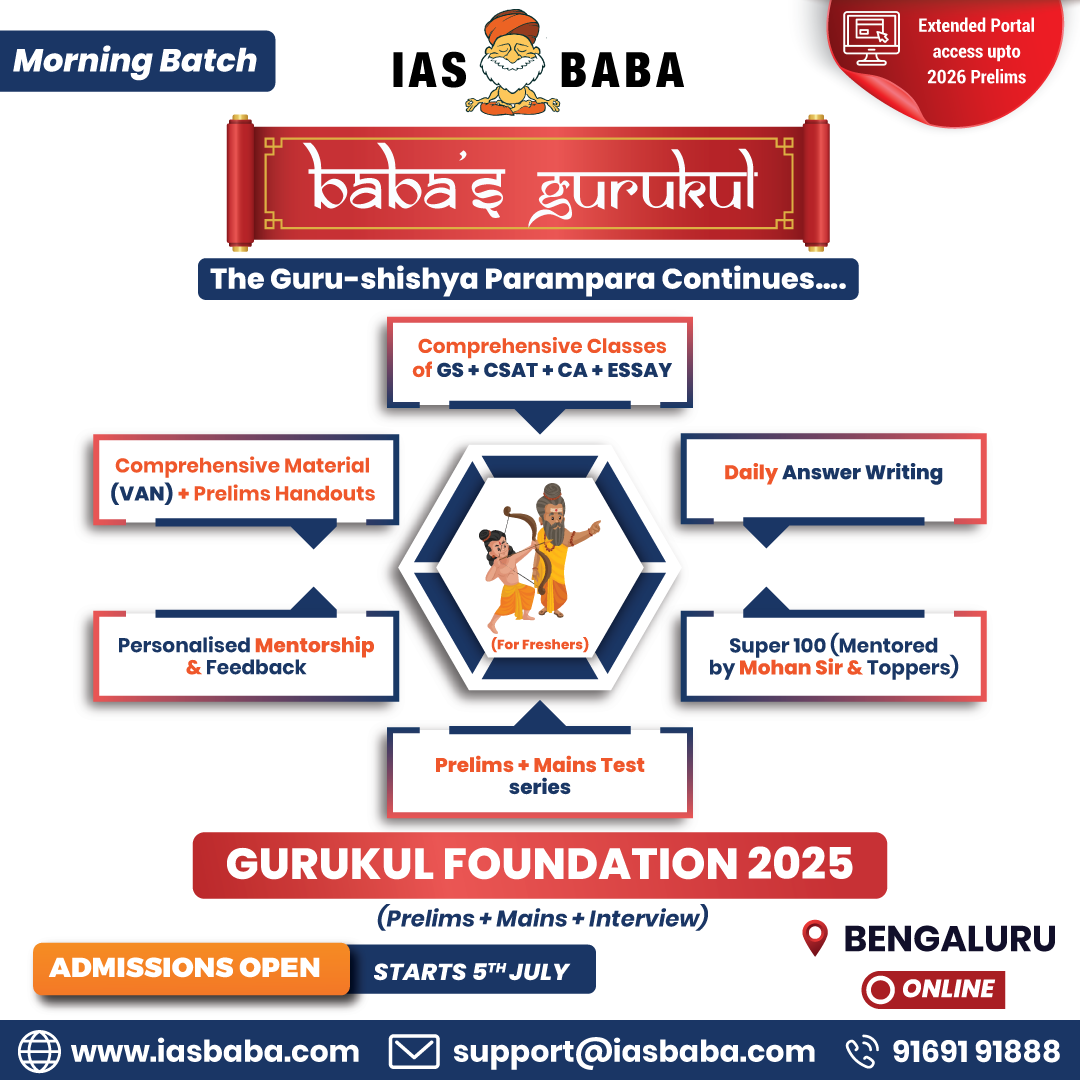IASbaba's Daily Current Affairs Analysis
Archives
(PRELIMS & MAINS Focus)
Syllabus
- Mains – GS 3
Context: As the 3rd NDA government has settled into seat firmly, it should now start focussing on multitude of internal security challenges.
Background:-
- A country projects its strength at the international level in direct proportion to its internal cohesion, its ability to resolve the differences within and not have any swamps where terrorists or extremists of any shade can breed.
The government should have a well-orchestrated plan for the next five years. On internal security, the following nine points should merit serious attention:
- One, need of internal security doctrine: All major powers have a national security doctrine (NSD) which outlines the internal and external challenges facing the country and prescribe the policies for dealing with them. Lack of an NSD results in ad hoc responses to security challenges, especially during government transitions.
- Two, Internal Security Ministry: The Ministry of Home Affairs has become too large and unwieldy, causing internal security issues to be neglected. A dedicated minister for internal security within the MHA is urgently needed.
- Three, Jammu and Kashmir: The state is far from normal in spite of the Home Minister’s claim that terror incidents are down by 66 per cent since the abrogation of Article 370. The government must take early steps to reorganise the security grid, restore statehood to J&K and hold elections for the Assembly.
- Four, the Northeast: A Framework Agreement signed with the rebel Nagas in 2015 had raised hopes, but these remain unfulfilled because of the NSCN (IM)’s insistence on a separate flag and constitution. The government should meanwhile insist on rigorous implementation of the suspension of operations agreement and ensure that the rebels do not engage in extortion and forcible recruitments. Manipur has been a disaster. The Home Ministry’s formation of a multi-ethnic peace committee has not been productive;The problems of illegal migration, drug trafficking and arms smuggling would require a comprehensive approach.
- Five, the naxal problem: There is a consistent decline in violence and shrinkage of the geographical spread of left-wing extremism’s (LWE) influence. With Naxals on the backfoot, it is now time for the healing touch. The government should offer them the olive branch, persuade them to come to the negotiating table, address their genuine grievances, and try to mainstream them.
- Six, Intelligence Bureau/CBI: The two premier central police organisations, Intelligence Bureau and the CBI, require restructuring. The IB was set up through an administrative order on December 23, 1887. It is high time that it is given a statutory basis, with safeguards to prevent the misuse of intelligence to bolster the party in power. The CBI was set up through a resolution passed in 1963, and it derives the power to investigate from the Delhi Special Police Establishment Act, 1946. It is an anomalous arrangement and, as recommended in the 24th report of the parliamentary committee, “the need of the hour is to strengthen the CBI in terms of legal mandate, infrastructure and resources”.
- Seven, state police: There is a need for transformation of the “Ruler’s Police” that we have inherited from the British into the “People’s Police”. Robert Peel, former British prime minister, is remembered to this day for having reformed the country’s police.
- Eight, Central Armed Police Forces. The CAPFs with an overall strength of more than a million are beset with serious internal problems of unplanned expansion, haphazard deployment, inadequate training, falling standards of discipline, vague criteria for the selection of top officers, friction between cadre and All India Service officers, etc.
- Nine, technology: There is enormous scope for technological inputs into the functioning of police in the country. These inputs would act as force multipliers.
Source: Indian Express
Syllabus
- Prelims & Mains – CURRENT EVENT
Context: India have done the right thing by launching a Rs 6,000 crore-worth National Quantum Mission to develop some of the most sought-after technologies for the future, but it will have to overcome a significantly large gap that currently exists between its capabilities and those of other leading countries in these areas like the U S and China, a new assessment of India’s potential in quantum technologies has revealed.
Background:
- The assessment by Itihaasa, a non-profit, shows that India was just one among 17 countries to have a dedicated government programme to back research in quantum technologies, and one of the 12 to have committed separate investments for the purpose. But several countries were much ahead of India, not just in terms of funding for research and development but also in their current capabilities.
About NATIONAL QUANTUM MISSION
- The Union Cabinet, approved the National Quantum Mission (NQM) on 19thApril 2023 at a total cost of Rs.6003.65 crore from 2023-24 to 2030-31, aiming to seed, nurture and scale up scientific and industrial R&D and create a vibrant & innovative ecosystem in Quantum Technology (QT).
- The Mission objectives include
- developing intermediate-scale quantum computers with 50-1000 physical qubits in 8 years,
- Satellite-based secure quantum communications between ground stations over a range of 2000 kilometers within India,
- long-distance secure quantum communications with other countries,
- inter-city quantum key distribution over 2000 km as well as multi-node Quantum networks with quantum memories
- The National Quantum Mission will also focus on:
- developing magnetometers with high sensitivity in atomic systems and Atomic Clocks for precision timing, communications, and navigation.
- It will also support the design and synthesis of quantum materials such as superconductors, novel semiconductor structures, and topological materials for the fabrication of quantum devices.
- Single photon sources/detectors, and entangled photon sources will also be developed for quantum communications, sensing, and metrological applications.
- Mission Implementation includes setting up of four Thematic Hubs (T-Hubs) in top academic and National R&D institutes in the domains:
- Quantum Computing
- Quantum Communication
- Quantum Sensing & Metrology
- Quantum Materials & Devices
- The hubs which will focus on generation of new knowledge through basic and applied research as well as promote R&D in areas that are mandated to them.
- The Mission would greatly benefit various sectors including communication, health, financial, energy with applications in drug design, space, banking, security etc.
Source: Indian Express
Syllabus
- Prelims – CURRENT EVENT
Context: With eight cases of the mosquito-borne Zika infection being reported from Maharashtra, the Centre’s Director-General of Health Services Wednesday asked states to focus on screening pregnant women for the virus and monitor the growth of their foetuses
Background:
- Zika is a mosquito-borne virus, similar to dengue fever, yellow fever and West Nile virus. The infection is associated with a birth defect called microcephaly, which can affect babies born to people who become infected with Zika while pregnant.
What is Zika?
- Zika is an infectious disease caused by a virus. The virus is carried by infected mosquitoes, including the Aedes aegypti and Aedes albopictus species.
- The infection itself (sometimes called Zika fever) is usually mild and goes away on its own. However, the impact of the virus has most significantly been seen in pregnant women and their fetuses.
How is Zika spread?
- Zika virus is primarily spread through the bite of infected mosquitos.
- If a pregnant woman is bitten by an infected mosquito, the infection can cross the placenta, infecting the fetus.
- The virus has also been transmitted through blood transfusion or laboratory exposure.
- Sexual transmission of the Zika virus can occur.
Zika Virus Symptoms
- Only about 1 in 5 people infected with Zika will exhibit symptoms, and they will be mostly mild. The most common symptoms of Zika virus infection are:
- Fever
- Zika rash: red spots that may be flat, raised or both
- Arthralgia (joint pain)
- Conjunctivitis (red, inflamed eyes)
- Headache
- Symptoms will usually last several days to a week, and clear up on their own. It is rare for Zika virus to cause severe illness that requires hospitalization.
- Zika Diagnosis
- Zika virus infection is diagnosed by a blood test. A urine test may also be appropriate if you have recently had or currently have symptoms.
- There is currently no vaccine or medication available to prevent or treat Zika virus infection.
Source: Indian Express
Syllabus
- Prelims – CURRENT EVENT
Context: The 16th edition of India-Mongolia Joint Military Exercise NOMADIC ELEPHANT commenced on 3rd July.
Background:
- Indian contingent comprising of 45 personnel is being represented by a Battalion of SIKKIM SCOUTS along with personnel from other arms and services. The Mongolian contingent is being represented by personnel from 150 Quick Reaction Force Battalion of the Mangolian Army.
About NOMADIC ELEPHANT
- The Nomadic Elephant exercise is a bilateral military exercise conducted by the armies of India and Mongolia.
- The exercise is conducted annually, alternating between India and Mongolia.
- The purpose of the exercise is to conduct semi-conventional operations in semi-urban and mountainous terrain under the UN mandate.
- The aim of the Exercise is to enhance joint military capability of both sides to undertake counter insurgency operations in a Sub Conventional scenario under Chapter VII of the United Nations Mandate.
- The exercise will focus on operations in the semi-urban and mountainous terrain.
- Tactical drills during the Exercise include Response to a Terrorist Action, Establishment of a Joint Command Post, Establishment of an Intelligence & Surveillance Centre, Securing of a Helipad/ Landing Site, Small Team Insertion & Extraction, Special Heliborne Operations, Cordon & Search Operations besides Employment of Drones and Counter Drone Systems amongst others.
- The 16th edition of exercise is scheduled to be conducted from 03rd to 16th July 2024 in Meghalaya.
- The 15th edition of the exercise was held in Ulaanbaatar, Mongolia.
Source: PIB
Syllabus
- Prelims – GEOGRAPHY
Context: The death toll from the Assam flood crisis has risen to 56 with an estimated 16 lakh people affected across 29 districts, as water levels of Brahmaputra and its tributaries surge, official figures stated.
Background:
- Rivers including the Brahmaputra, Digaru, and Kollong are flowing above the danger mark, submerging large areas of land in the Assam.

About BRAHMAPUTRA RIVER :
- The Brahmaputra River is a trans-boundary river that flows through Tibet (China), Northeastern India, and Bangladesh.
- It originates from the Chemayungdung glacier near Mount Kailash in the Himalayas (Tibet) and is known as the Yarlung Tsangpo in Tibetan.
- After entering India near the village of Gelling in Arunachal Pradesh, it flows southwest through the Assam Valley as the Brahmaputra.
- The river crosses Assam and enters Bangladesh.
- In Bangladesh, the Brahmaputra River is known as the Jamuna, and when it joins the Ganga, they together form the mighty Padma River and finally drains into the Bay of Bengal.
- Dibang River, Lohit River, Dhansiri River, Kameng River, Manas River, Teesta River, Subansiri River are the major tributaries of River Brahmaputra.
Source: Business Standard
Syllabus
- Prelims – Geography
Context: JSW Tuticorin Multipurpose Terminal Private Ltd., a subsidiary of JSW Infrastructure, has finalized a concession agreement with the V.O. Chidambaranar Port Authority in Tamil Nadu to develop a new cargo berth at the port.
Background:
- This initiative aims to enhance cargo handling capabilities and leverage the rich hinterland with diverse cargo profiles, including dry bulk, coal, limestone, gypsum, rock phosphate, and copper concentrate.
About TUTICORIN PORT :
- The V.O. Chidambaranar Port, also known as the Tuticorin Port, is one of the major ports in India.
- It is situated in Thoothukudi, Tamil Nadu.
- This artificial port was declared a major port on July 11, 1974.
- The port is named after V.O. Chidambaram Pillai, an eminent freedom fighter, and continues to play a crucial role in India’s maritime trade.
- It serves as the second-largest port in Tamil Nadu and the fourth-largest container terminal in the country.
- The port operates round the clock throughout the year and plays a crucial role in supporting export-import (EXIM) trade.
- Tamil Nadu has three major ports: V. O. Chidambaranar Port (Tuticorin) and Kamajar Port (Ennore) and Chennai Port.
- These ports, along with an intermediate port at Nagapattinam, play a crucial role in facilitating trade and commerce in the state.
Source: Hindu
Practice MCQs
Q1.)With reference to the Brahmaputra River, consider the following statements:
- It is a trans-boundary river that flows through China, Bangladesh and India.
- It originates from the Chemayungdung glacier near Mount Kailash.
Which of the statements given above is/are correct?
- 1 only
- 2 only
- Both 1 and 2
- Neither 1 nor 2
Q2.) Consider the following Major ports in India
- Jawaharlal Nehru Port
- O. Chidambaranar Port
- Kamajar Port
- Cochin Port
How many of the above-mentioned ports are located in Tamil Nadu?
- Only one
- Only two
- Only three
- All four
Q3.) The Nomadic Elephant exercise is a bilateral military exercise conducted by the armies of
- India and Bangladesh
- France and China
- India and Mongolia
- Israel and Russia
Comment the answers to the above questions in the comment section below!!
ANSWERS FOR ’ 5th July 2024 – Daily Practice MCQs’ will be updated along with tomorrow’s Daily Current Affairs.st
ANSWERS FOR 4th July – Daily Practice MCQs
Q.1) – d
Q.2) – b
Q.3) – b













